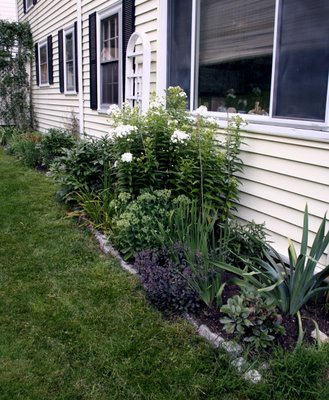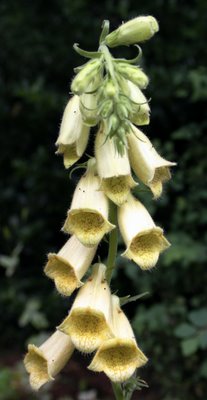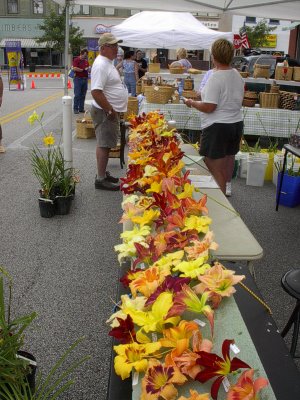Angle of repose: the old side garden does indeed like to spill out of its bed. Here, a week or so ago, the lilac blue of catmint, ladybells, and hostas alternates with the white of shasta daisies and, in time, phlox panticulata "David."
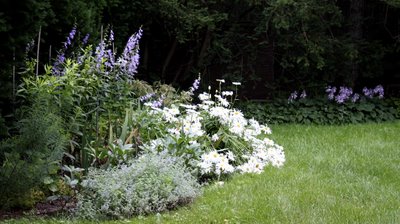
However, this bed is best viewed obliquely rather than dead on, especially after deadheading. Ouch! Only the phlox is left to pull through the rest of the summer.
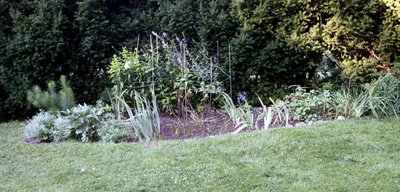
Across the yard, the new bed is looking decidedly . . . new. So much bare soil is practically indecent.
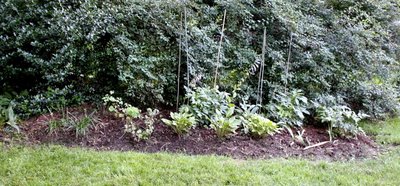
And along the back of the house, the usual suspects are behaving in their usual ways: the phlox is coming into bloom, the sedum is preparing for its autumn show and, at the far end, the rose is climbing over its trellis. While the larkspur, in the center, heads towards seed, its stems embrittle and turn pale. I need to mask this skeletal sight--but with what?
